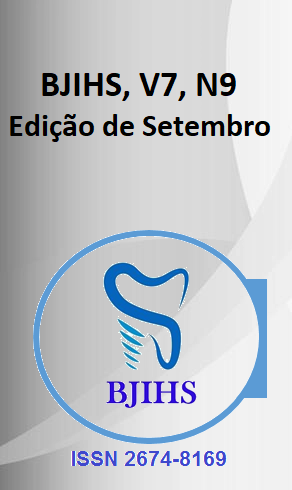Abstract
Spinal astrocytoma is a rare central nervous system tumor that originates in the astrocytic cells of the spinal cord. Although they account for 5-10% of primary spinal tumors, their diagnosis and treatment continue to be challenging due to their clinical and radiological heterogeneity. The aim of this review is to explore the most recent advances in the diagnosis, treatment, and prognosis of spinal astrocytomas, with an emphasis on emerging therapies and their impact on patients' quality of life. The methodology followed was a narrative review of the scientific literature published between 2019 and 2025, obtained through the PubMed database. The selected studies addressed key topics such as imaging techniques for diagnosis, therapeutic options (surgical, radiotherapeutic, and chemotherapeutic), and emerging treatments, such as molecular and gene therapy. A qualitative analysis was carried out to identify current trends and areas requiring further research. The results revealed that magnetic resonance imaging (MRI) remains the primary tool for diagnosis, while surgery is the most commonly used treatment, especially in low-grade astrocytomas. Radiotherapy and chemotherapy are fundamental in high-grade tumors, and molecular and gene therapies are gaining relevance in the treatment of recurrent or resistant tumors. In conclusion, while significant progress has been made, early diagnosis and effective treatment remain important challenges. Future research in personalized therapies and advanced imaging techniques will be crucial to improve outcomes for patients with spinal astrocytomas.
References
Bender K, Perez E, Chirica M, Onken J, Kahn J, Brenner W, et al. High-grade astrocytoma with piloid features (HGAP): the Charité experience with a new central nervous system tumor entity. J Neurooncol [Internet]. 2021;153(1):109-20. Disponible en: https://www.ncbi.nlm.nih.gov/pmc/articles/PMC8131327/
Biczok A, Strübing FL, Eder JM, Egensperger R, Schnell O, Zausinger S, et al. Molecular diagnostics helps to identify distinct subgroups of spinal astrocytomas. Acta Neuropathol Commun [Internet]. 30 de junio de 2021;9:119. Disponible en: https://www.ncbi.nlm.nih.gov/pmc/articles/PMC8244211/
Métais A, Bouchoucha Y, Kergrohen T, Dangouloff-Ros V, Maynadier X, Ajlil Y, et al. Pediatric spinal pilocytic astrocytomas form a distinct epigenetic subclass from pilocytic astrocytomas of other locations and diffuse leptomeningeal glioneuronal tumours. Acta Neuropathol [Internet]. 2023;145(1):83-95. Disponible en: https://www.ncbi.nlm.nih.gov/pmc/articles/PMC9582396/
Zhao Z, Song Z, Wang Z, Zhang F, Ding Z, Fan T. Advances in Molecular Pathology, Diagnosis and Treatment of Spinal Cord Astrocytomas. Technol Cancer Res Treat [Internet]. 23 de julio de 2024;23:15330338241262483. Disponible en: https://www.ncbi.nlm.nih.gov/pmc/articles/PMC11271101/
Li Y, Zheng Z, He Q. Individualized Prediction of Overall Survival Time for Patients with Primary Intramedullary Spinal Cord Astrocytoma: A Population-Based Study. World Neurosurgery [Internet]. 1 de enero de 2025;193:1106-16. Disponible en: https://www.sciencedirect.com/science/article/pii/S1878875024017960
Butenschoen VM, Hubertus V, Janssen IK, Onken J, Wipplinger C, Mende KC, et al. Surgical treatment and neurological outcome of infiltrating intramedullary astrocytoma WHO II–IV: a multicenter retrospective case series. J Neurooncol [Internet]. 2021;151(2):181-91. Disponible en: https://www.ncbi.nlm.nih.gov/pmc/articles/PMC7875841/
Caruso JP, Shi C, Rail B, Aoun SG, Bagley CA. Aggressively recurring cervical intramedullary anaplastic astrocytoma in a pregnant patient. Surg Neurol Int [Internet]. 13 de septiembre de 2021;12:466. Disponible en: https://www.ncbi.nlm.nih.gov/pmc/articles/PMC8492418/
Daffini L, Pagani F, Cominelli M, Lodoli G, Tironi A, Poliani PL. Leptomeningeal dissemination of anaplastic medullary cone astrocytoma: an unexpected findings in a patient with leptomeningeal enhancement and clinical history of multiple myeloma. Pathologica [Internet]. 1 de septiembre de 2021;113(4):294-9. Disponible en: https://www.ncbi.nlm.nih.gov/pmc/articles/PMC8488982/
Singh AK, Sheikh AI, Pandey TK, Chabbra DK. Congenital Mobile Atlantoaxial Dislocation with Cervicomedullary Astrocytoma in Pediatric Patient. Neurol India. 2021;69(1):194-7.
Henriksen OM, Hansen AE, Muhic A, Marner L, Madsen K, Møller S, et al. Diagnostic yield of simultaneous dynamic contrast-enhanced magnetic resonance perfusion measurements and [18F]FET PET in patients with suspected recurrent anaplastic astrocytoma and glioblastoma. Eur J Nucl Med Mol Imaging. noviembre de 2022;49(13):4677-91.
Kurokawa R, Umemura Y, Capizzano A, Kurokawa M, Baba A, Holmes A, et al. Dynamic susceptibility contrast and diffusion-weighted MRI in posterior fossa pilocytic astrocytoma and medulloblastoma. J Neuroimaging. mayo de 2022;32(3):511-20.
Sun T, Wang Y, Liu X, Li Z, Zhang J, Lu J, et al. Deep learning based on preoperative magnetic resonance (MR) images improves the predictive power of survival models in primary spinal cord astrocytomas. Neuro Oncol. 2 de junio de 2023;25(6):1157-65.
Liu Y, Chen H, Li G, Zhang J, Yao K, Wu C, et al. Radiotherapy delays malignant transformation and prolongs survival in patients with IDH-mutant gliomas. Cancer Biol Med. 1 de noviembre de 2022;19(10):1477-86.
Han X, Zhou H, Sun W, Hou L, Wang Y, Wang H, et al. IDH1R132H mutation increases radiotherapy efficacy and a 4-gene radiotherapy-related signature of WHO grade 4 gliomas. Sci Rep. 11 de noviembre de 2023;13(1):19659.
Esteyrie V, Dehais C, Martin E, Carpentier C, Uro-Coste E, Figarella-Branger D, et al. Radiotherapy Plus Procarbazine, Lomustine, and Vincristine Versus Radiotherapy Plus Temozolomide for IDH-Mutant Anaplastic Astrocytoma: A Retrospective Multicenter Analysis of the French POLA Cohort. Oncologist. mayo de 2021;26(5):e838-46.
Kamel R, Van den Berge D. Radiotherapy for subependymal giant cell astrocytoma: time to challenge a historical ban? A case report and review of the literature. J Med Case Rep. 20 de julio de 2024;18(1):330.

This work is licensed under a Creative Commons Attribution 4.0 International License.
Copyright (c) 2025 Katiuska Elizabeth Vera Delgado

